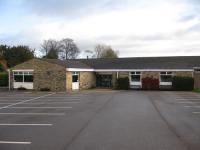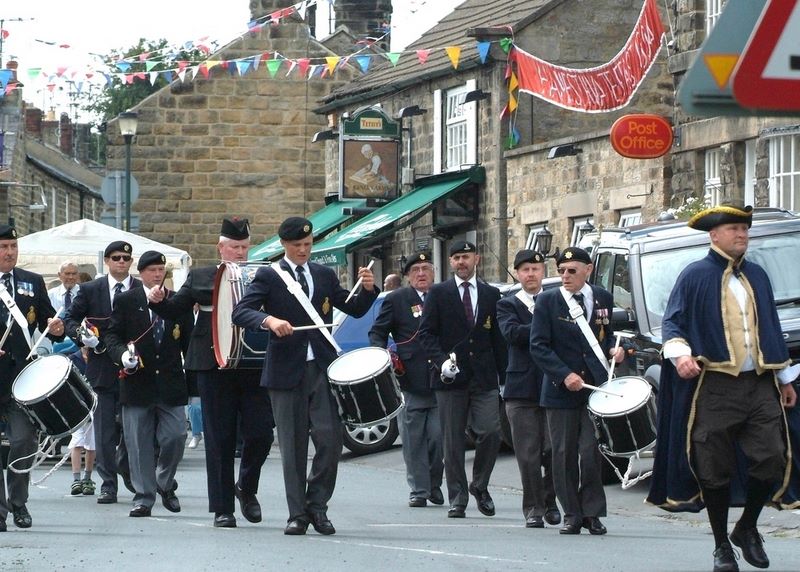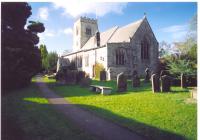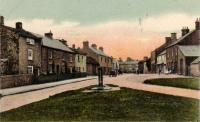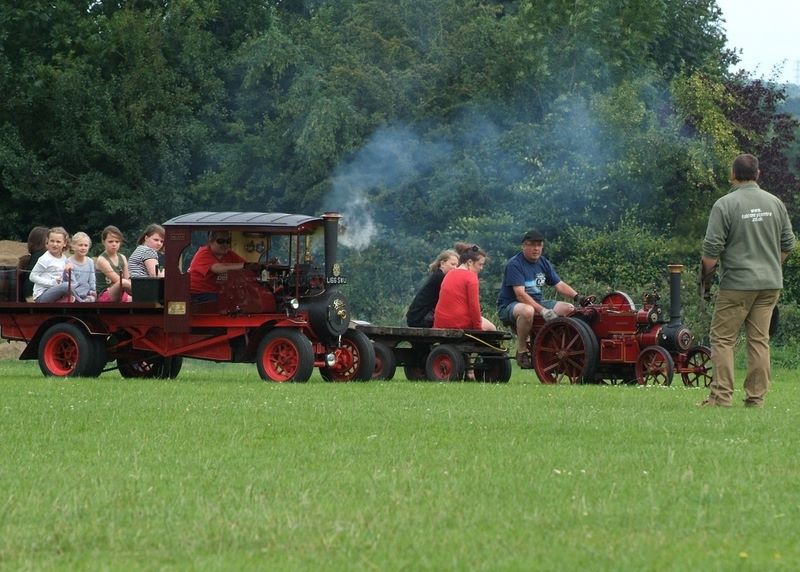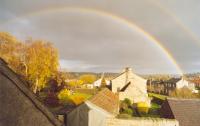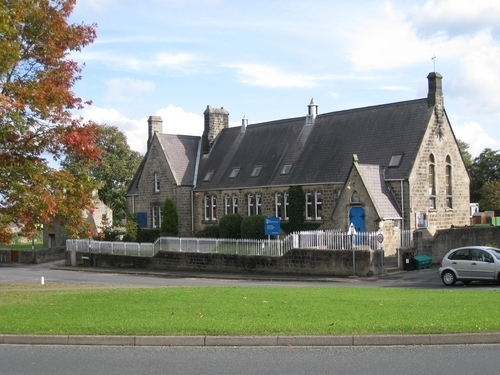Recent articles
© DT Online 2010 - 2025
| Press CuttingsLocal newpaper reports of the 1968 flooding in Hampsthwaite on 2nd July 1968 
Stricken Dales village breathes again HARROGATE ADVERTISER. SATURDAY. JULY 6, 1968 At Hampsthwaite the scene on Tuesday was one of utter devastation, with furniture, carpets. foodstuffs, trees, walls and remains of garden sheds and poultry houses littering the streets. Inside houses in High Street, and at the corner of Hollins Lane, a thick layer of greasy mud covered everything where the floodwater had been at depths of up to four feet. Men from the Royal Navy Station of H.M.S. Forest Moor, near Darley, and from the Army Apprentices’ College, at Harrogate, were drafted into the village to help householders to salvage belongings and clear up the mess. “Like a tidal wave” A 70-year-old widow, Mrs. Eileen Springer. of Seven Kings, Essex, was found in the bedroom of Lamb Cottage, Hampsthwaite. She had been staying at the cottage with her sister-in-law. When Harrogate Fire Brigade arrived after receiving a call that Mrs. Springer was trapped in the cottage, It was found that the ambulance had been unable to reach it. After a field car and a breakdown wagon had made unsuccessful attempts to reach the cottage, firemen went down the street in a tractor-drawn trailer driven by Mr. Clive Harris, of Vale Terrace. Hampsthwaite, who works on the farm of Mr. George Fawcett, at Killinghall. They reached the cottage and found Mrs. Springer in the bedroom. She appeared to be dead. A fireman who took down a door from a house across the road to use as a stretcher was almost swept away with the door. Eventually they got a door and carried Mrs. Springer out on it. She was taken to the ambulance. A post-mortem examination showed that death was due to coronary thrombosis. Mr. J. E. Lundell, proprietor of the Corner Shop at the junction of High Street and Hollins Lane, said he was in his shop when floodwater rushed in from both the front and the back. A the back, Cockhill Beck came over its banks and into store-rooms, while water from High Street poured in at the front door, ruining foodstuffs, cigarettes and other articles. "There were chocolates, cigarettes and biscuits floating everywhere", said Mrs. Lundell, who was helping her husband at the time. AlI the lower shelves in the shop were swept clean by the flood, and goods were carried out into the street. Through both doors At the top of High Street, the village postman. Mr, H. Barker, lost a complete poultry house measuring 24 feet by 12 feet, and all the poultry inside. Mr. Barker said there were about 40 birds in the house, including chickens, bantams. and ducklings. He also lost about 20 pigeons which roosted on the building, and two motor-cycles in another shed were swept away as well. Two dogs he had in kennels in the garden had a lucky escape. An Alsatian broke down the door of its kennel and escaped before the water reached it, and a terrier chained up in an outbuilding was rescued by an unknown workman who fought his way through waist deep floodwater to release it. Memorial Hall flooded All residents were high in their praise of the Navy and Army Apprentices in helping with the clearing-up. A mini-car was washed along the street at the lower end of the village, and was prevented from being swept away only when the owner spotted it on the move and rushed into the water to push it clear. Other cars on the roadside were almost covered by the water, and rocks and other debris built up around and underneath them. Numerous other house, garage premises and the Joiners Arms were also flooded. House had floodwater varying from a few feet deep to a matter of inches in them, and their occupants, where possible, waded through to carry furniture into the streets and to higher ground. A lot of furniture was damaged, and numerous electrical appliances were ruined. In other houses, especially where the occupants were elderly people refuge was sought in upstairs rooms, while volunteer helpers from other parts of the village did what they could by way of salvage work. All roads in and out of Hampsthwaite were flooded. some running like rivers, while on the road to Clint hailstones lay over two feet thick. Greenhouses wrecked At Killinghall hundreds of windows were shattered, and at Daleside Nurseries on the main Ripon Road greenhouses covering half an acre were almost totally wrecked. One of the Joint proprietors, Mr. K. W. Darley, said it was impossible to estimate it. Over all 10 acres of the grounds the devastation was the same. Alpine plants, tomatoes, trees and shrubs were stripped of foliage and ruined. Special plants in one of the greenhouses which were prepared for the Great Yorkshire Show were also ruined. On the other side of the valley, at Shaw Mills, the Nelson Arms Inn and several houses were flooded when the beck broke its banks. Coupled with the floodwater was effluent from tanks at two animal skin processing mills in the village. This mixture of water and effluent flowed into the Nelson Arms at almost window-sill height, and flooded the cellars spoiling barrels of beer and other drinks. The landlord, Mr. H. Thompson. said he had no idea the what the damage was in terms cash. The car park was ripped up by floodwater, and Mr. Thompson almost lost his car as a wave at water hit it and started to sweep it down the valley. He saved it by fastening a rope to it and towing it clear with a tractor. Two cottages opposite the Inn were flooded, as also were several cottages at Clint Terrace, further up the village. Law Lane, which connects Shaw Mills with Ripley on the main bus route, was closed to traffic as the road was ripped up for a distance of several yards by the force of the flood. Lower down the road, the village sewage works were inundated and sewage was swept down the valley on the tide of floodwater. Kettlesing road closed Birstwith was flooded in varous places near the flour mill, and fire engines pumped water from cottages on the-roadside. Gardens were laid fiat as water poured from fields onto the roads, and piles of gravel and mud accumulated on roads. Further up the Dale conditions improved, and beyond Pateley Bridge there was only minor flooding on roads and fields. At Hartwith private road entrances from the main Pateley Bridge to Harrogate Road were ripped up in large slabs as floodwater sought the lower parts of the valley. At Darley, huge piles of gravel and soil piled up on the main road as water swept from higher ground. Flooding occurred at Summer-bridge, where large sections of wall on the side of the main road just outside the village in the Harrogate direction were swept down. Between Dacre Parish Church and the Nidd Valley sawmills at Dacre Banks the road was under several feet of water, and a number of vehicles were held up. Only heavy traffic and field cars could make any progress in the floods. Drains burst Floodwater collected at the bottom of Pateley Bridge High Street and on the road by the Recreation ground but no damage or hold-up was caused. Even the third highest village in England. Greenhow Hill, experienced some flooding. The Miners' Arms Hotel had water running on floor but generally this area and the whole of Upper Nidderdale escaped with only minor flooding. At the lower end of the Dale, Wednesday was a day for reckoning the cost and clearing up the remainder of the mud and debris that the Army, Navy and hundreds of villagers could not deal with the previous day. Carpets were taken away for drying by the Army Apprentices College and workmen from the Nidderdale Rural Council cleared lorry loads of mud, trees and rubbish from the road sides. As many residents of Hampsthwaite, Ripley and Killinghall - the worst-hit of the whole area - began to take stock. all were firm on one thing; nothing like it had been experienced in living memory. Late on Wednesday evening when a staff reporter toured the area. a cheeriness was creeping back into the people of these stricken villages as the last bits and pieces were cleared away and there was only the cost left to count, Called from holiday Alone in the house at the time, Mr Jackson’s father, Mr. C. Jackson, took refuge in a bedroom while downstairs the flood wrecked every stick of furniture", of all the damage I have seen", an eye-witness told a staff reporter, “this is the worst". The toll road by which the cottage stands was so badly damaged as to be made impassable. Press Cuttings Local newpaper reports of the 1968 flooding in Hampsthwaite on 2nd July 1968 |






